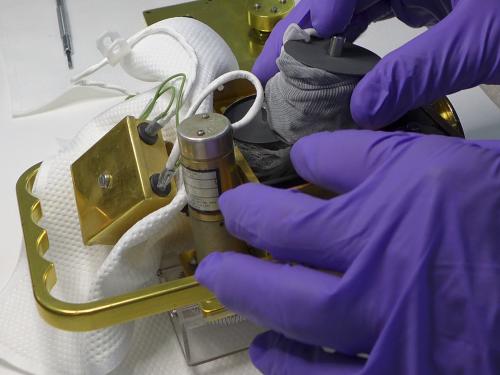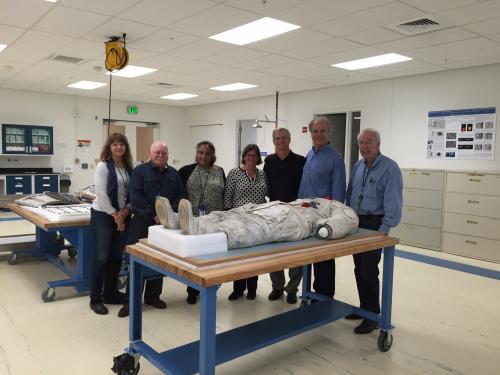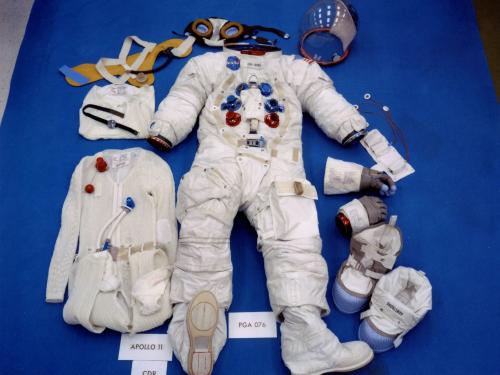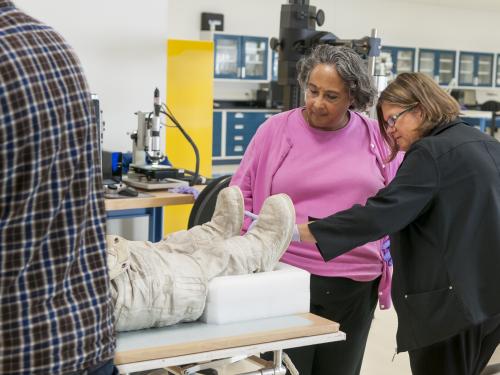
Story
The Clouds in a Bag exhibit at the Steven F. Udvar-Hazy Center in Chantilly, Virginia, displays many early renditions of ballooning, including a 18th-19th century dance box. Take a look at the conservation process behind this charming object.

Discover stories from work going on inside the Smithsonian National Air and Space Museum's conservation lab.
Showing 21 - 30 of 35

Story
The Clouds in a Bag exhibit at the Steven F. Udvar-Hazy Center in Chantilly, Virginia, displays many early renditions of ballooning, including a 18th-19th century dance box. Take a look at the conservation process behind this charming object.

Story
The last time the Apollo 11 Command Module Columbia traveled the US was in 1970. Almost 50 years later, the historic spacecraft that helped take us to the Moon and back is headed out on the road for a nationwide tour. Following the tour, the Command Module will be placed on permanent display in the exhibition Destination Moon, scheduled to open in 2020 at the Museum in Washington, DC. The Museum’s conservation team will spend the next six months preparing the artifact for travel and display. Conservator Lisa Young shares what the next few months will look like and what she’s most interested in finding out about Columbia.

Story
Conservator Amanda Malkin has spent the last year examining, documenting, and conservering the Museum's 20 nineteenth century Chinese kites. Malkin shares how the traditional kites were constructed from the multiple thicknesses of split bamboo to the plant fibers that make up the Chinese paper. She also documents her conservation process for one of the treated kites, including the delicate process of removing brown craft paper tape.

Story
This week the Apollo 11 Command Module, Columbia, which carried Neil Armstrong, Buzz Aldrin, and Michael Collins on their historic trip to the Moon, moved to the Steven F. Udvar-Hazy Center in Chantilly, Virginia. To many of us at the Museum, the move seemed to have miraculously happened overnight. In truth, the move took a team of experts and months of meticulous planning to pull off.
“This is something that’s unlike anything, at least for me, that I’ve ever moved,” said Anthony Wallace, a museum specialist in the Museum’s collections processing unit. Wallace explained that the spacecraft was not as complicated to move as some of the Museum’s aircraft, but the historical significance of the object heightened everyone’s awareness.

Story
The Museum periodically performs a thorough, physical check of all our objects. We open panels and cases and closely inspect each object for any sign of deterioration due to light, humidity, vibration, or just the march of time. We always hope there are no surprises. But when conservator Robin O’Hern, gallery inventory coordinator Erin Ober, and their colleagues opened a large chamber in the Apollo to the Moon gallery, they got a shock; an acrid chemical smell.

Story
The Museum has been tackling a variety of artifact treatments through its Collections Care and Preservation Fund (CCPF) Triage Project. The goal of the project is to stabilize artifacts as they are moved from the Paul E. Garber Preservation, Restoration, and Storage Facility to state-of-the-art storage located at the Steven F. Udvar-Hazy Center in Chantilly, Virginia. The triage project addresses urgent issues affecting artifacts such as active corrosion, pest infestation, biological growth, and physical insecurities.

Story
Our conservation team had the pleasure of hosting Alan Eustace, former Google executive, engineer, and stratospheric explorer, this month in the Emil Buehler Conservation Laboratory. Eustace and his StratEx team are well known for their three world records including one for the highest altitude jump at 41,422 meters (135,899 feet) in 2014. The adventurer was in town giving a lecture about his historic jump and to donate to the Museum the suit, life support, and balloon equipment module he used during the jump.

Story
The experimental helmet, worn by famed American aviator Wiley Post to test the limits of high-altitude flying, can normally be seen at the Smithsonian Institution Building (The Castle) on the National Mall in Washington, DC. When white corrosion deposits were noticed on the metal, however, the helmet was removed for examination and treatment. It was sent to the Museum’s Emil Buehler Conservation Laboratory in Chantilly, Virginia.

Story
Learn how to put on an Apollo spacesuit.

Story
The Smithsonian’s first-ever Kickstarter campaign to conserve, digitize, and display Neil Armstrong’s Apollo 11 spacesuit was fully backed in just five days!